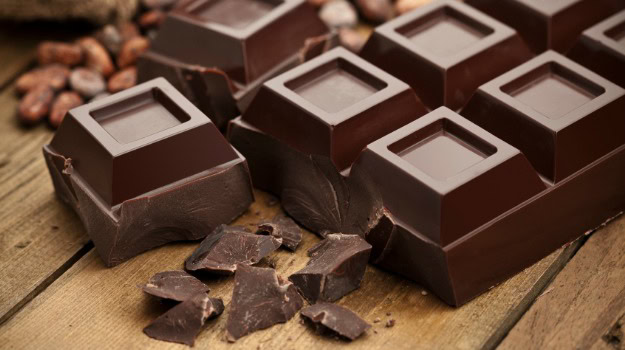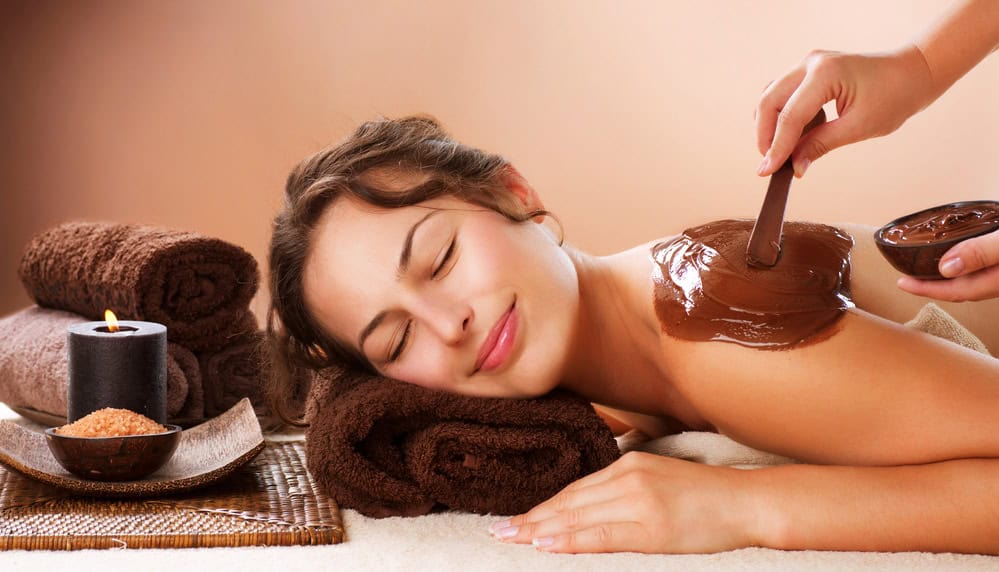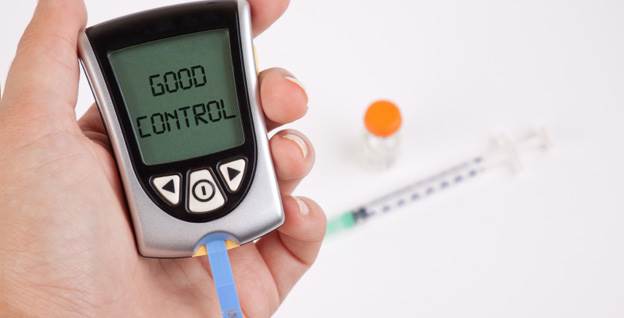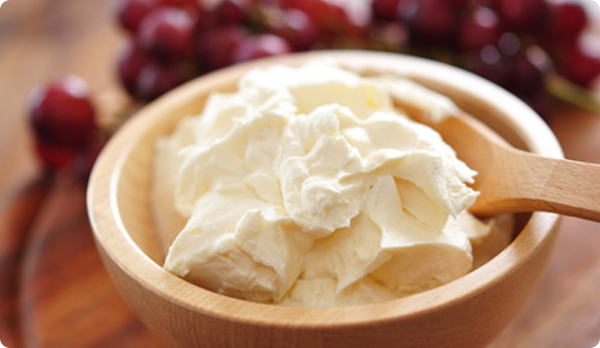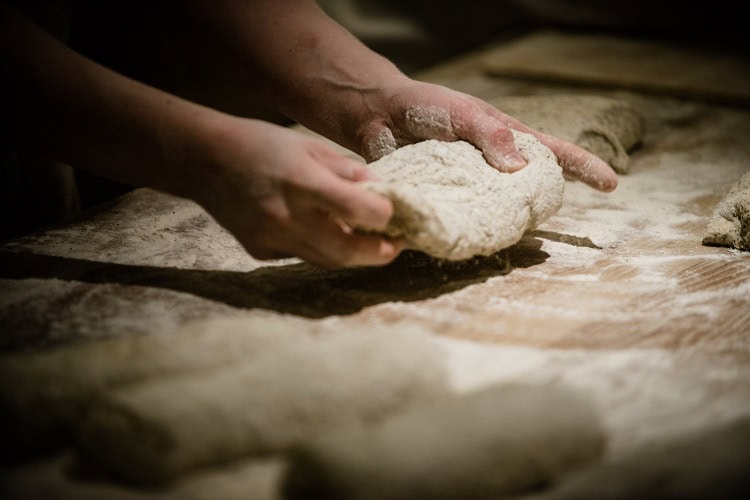Category: Health
Health Benefits of Cheese
Did you know that there are many health benefits to eating cheese? Of course, we need to consume everything in moderation but we’re excited to share with you some of the great healthy elements of our favorite food.
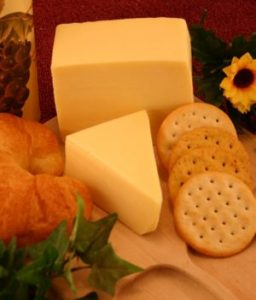
Calcium
Cheese is an excellent source of calcium. This is important for promoting healthy bones and teeth, especially in our younger years. Even more essentially, calcium helps our muscles to contract and our heart to beat. It is quite vital for our health!
Fat
Some fat in our diet is very important and cheese can provide this whilst also offering many other health benefits. If you need to gain weight for health reasons, then cheese can be an excellent addition to your balanced diet. The healthy fat known as CLA supports our immune systems, regulates blood sugar levels and can even reduce your risk of heart disease. CLA is found in a variety of cheeses, but especially those made with milk from grass-fed cows.
Protein
This is responsible for repairing and protecting our body and also promotes a good immune system. As our bodies do not store protein, we need to make sure that we eat adequate amounts of it each day. Hard cheeses such as Parmesan have the highest protein content; wet, fresh cheeses will have much less.
Vitamin B12
This is the largest and most complex vitamin that we have knowledge of. It helps the production of red blood cells, protein and DNA. Without it, we can experience lethargy and muscle weakness. Cleverly, our body can store away any excess of B12 that we don’t need at the time for up to a year. We can find the highest B12 content in delicious Swiss cheese. That’s an excuse to eat some if ever we heard it!
Vitamin K2
This vitamin can help to prevent some of the most common diseases facing us. It works with calcium and vitamin D to help your bone, skin and dental health. This is another vitamin found most often in hard cheeses, especially Gouda and brie.
Glutathione
You might not have heard of this antioxidant, but a study found that it is found in dairy products. It is great for our brain health and preventing age-related degeneration.
So, there you have it, cheese isn’t simply bad for you. In fact, in most cases, it is the things that we eat cheese on that are unhealthy: pizza bases, nachos, and so on. As part of a balanced diet, cheese provides many of the health benefits that are essential to us. Consider eating cheese with salads, fruits or in dishes with vegetables to keep getting those health benefits without the less healthy foods.
It has been shown that cheeses made with milk from grass-fed animals are the best in terms of nutrients, so you’ll be pleased to know that many of our local cheeses are made from the highest quality milk, with no artificial hormones added.
How do you like to stay healthy? Let us know in the comments below!
Seeds: How to Eat More of these Superfoods
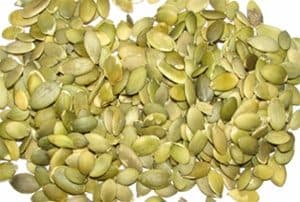
Did you know that seeds are incredibly good for you?
Seeds contain high levels of essential fatty acids as well as lots of vitamins and minerals that can help to keep us healthy. Because they are so nutrient-rich, you don’t need to eat a lot each day to get the health benefits of them. A tablespoon a day is more than enough.
We’ve put together a list of ideas to help you eat more and get the goodness into your diet. We stock both sunflower and pumpkin seeds which will both work well in any of the options below.
Seeds: On Cereal
Start your day with a spoonful of seeds sprinkled on top of your usual cereal. Even better, you could have seeds as part of a bowl of granola or muesli. You can easily make your own granola by choosing a selection of oats, nuts, and seeds and gently roasting them in the oven. Drizzle them with honey or maple syrup if you like them to be slightly sweet, or mix in a selection of dried fruit before storing the granola away.
On Yogurt
Yogurt can be a great healthy snack if you choose one that is low in sugar and fat. It is full of protein and when sprinkled with seeds will give you the energy to take you right through the day. If you find yourself experiencing a mid-afternoon moment of tiredness then why not pack a pot of yogurt and a small tub of them to enjoy wherever you happen to be?
Stir Fry
Next time you whip up a quick stir fry of your favorite meats and vegetables, add a spoonful towards the end of cooking. Not only will they add a crunchy texture, but they’ll toast beautifully and add plenty of nutty flavor to your dish. Just be careful not to burn them.
Salads
Of course, salads had to be on this list. You always want to be adding texture and protein to your salad and seeds are a quick and easy way to do this. If you are often making a quick lunch at the office, keep a pot of them at your desk or in your car so that you can quickly add them without any fuss.
Soups
Instead of a swirl of cream, try a smattering of seeds! They’re better for you and add both texture and flavor to your dish. Even if you haven’t made the soup from scratch yourself, you can make it seem like a put together meal.
Trail Mix
This is another option that you can make yourself with all of your favorite ingredients, but if you need a quick and easy option then our diet trail mix contains nuts, seeds, and fruits to give you a boost of energy.
We hope that these handy tips will help you to get some of those essential fatty acids and vitamins into your day to day meals. How do you like to eat seeds? Let us know in the comments!
Hiking? The Snacks to Take Along With You
As the weather warms up, we know that some of you will be heading into the outdoors for some hiking. Whether you’re tackling a gentle walk or your nearest mountain, we’ve got the snacks to keep you fueled up.

1. Trail Mix
The clue is absolutely in the name. When you’re on the trail, eat trail mix.
Our original trail mix is packed with nuts and dried fruit. Our diet trail mix is great if you’re hiking to get fit. Buggy trail mix has butter toffee peanuts, honey roasted sesame sticks, cheddar crackers, pretzel nuggets, and wheat crackers. They’re sure to keep you walking even when the going gets tough.
We also offer a banana split mix which contains cranberries, banana chips, almonds, chocolate covered peanuts, chocolate drops, pineapple tidbits, raisins, yogurt covered peanuts, peanuts, and yogurt drops. You could also try Mikey’s Mix which is packed with nuts and chocolate treats in case you need an extra incentive to keep hiking.
If you’ve got time, you could try making your own trail mix. Check out our gourmet foods section and pick your favorite things to mix up.
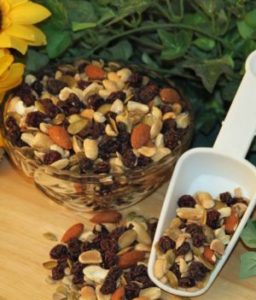
2. Dried Fruit
Dried fruit is a great source of energy while you’re hiking. We especially love dried strawberries, kiwi, banana chips, and pineapple.
We also offer Think Fruit Dried Fruit Snacks in a variety of flavors, packaged up and ready for you to take out on the trail.
3. Jerky
Jerky is full of protein which makes it perfect for hiking. Try our Uncle Mike’s Beef Jerky, which we offer in Mild, Hot or Teriyaki flavor. It’s easy to pack and pull out as you’re walking.
4. Nuts
We have a great range of nuts including peanuts, pistachios, and cashews. They’re a healthy source of protein and fats. You can even create your own mixes of them or take along sachets of nut butter to snack on.
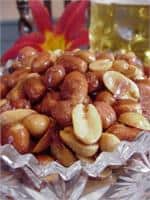
5. Energy bars
There are loads of different energy bars out there, but most of them are great for keeping you on the go. Take your favorites along with you hiking and remember to pack a few for your friends as well.
We hope that these ideas will help you to plan your next hiking trip. Remember to take plenty of water along with you to keep hydrated. Make sure that you plan your route and take along a map to keep you safe. Appropriate footwear, layers and waterproof clothing will keep you warm and dry – we know that the weather can be unpredictable sometimes!
Where is your favorite hiking spot? What snacks do you like to take along? Let us know in the comments!
Pasteurized Or Unpasteurized- Which Is Best?
At Shisler’s Cheese House, we home a number of cheeses soft, hard, blue- you name it. These cheeses are either made with pasteurized or unpasteurized milk, it usually comes down to the cheesemakers choice, however, some regulations restrict cheesemakers, for example, Stilton has to be made with pasteurized milk and Comte, which has been subject to many controversies, has to be made using unpasteurized milk.
The biggest wonders that come up when discussing the two kinds of milk are first, is pasteurized milk safer than unpasteurized milk? Secondly, does cheese being made with unpasteurized milk taste better?
The most important subject to discuss is obviously if pasteurized milk is safer. It is not an easily answered question, you need to look at the risks and safety concerns surrounding unpasteurized milk, first.
It is common that cheesemaking rooms will contain lots of different bacteria, mainly good bacteria, but then there are quite a few bad bacterias. Some of the bad bacterias that may be present can contaminate milk or cheese with E-coli, Salmonella, and Listeria. However, there are ways to keep these under control and minimize the risks. Some of these ways are actually part of the cheesemaking processes, such as salt dehydrates, these help a lot because a lot of bacteria requires moisture to thrive. Other processes include appropriate procedures during the handling of the milk, the cheesemaking and the maturing of the cheese, shipping, and packaging.
What Is Pasteurisation?

Pasteurization is the process of heating the milk to around 160 degrees Fahrenheit for 15-25 seconds. This is to kill the pathogens which were mentioned above, not only that, but it kills pretty much everything else, which can be bad as some are important in cheesemaking as they act as a natural defense which comes from the milk. This process also allows for more errors as cheesemakers can become complacent which increases contamination risks. However, that being said, all cheesemakers that Shisler’s Cheese House works with, are never complacent and work to a high and safe standard at all times.
The main thing we believe is that with the safe and controlled handling of milk and cheese, whether it is pasteurized or not, the outcome will be the cheese that is safe to eat, with no significant risks either way.
Does Unpasteurised Milk Taste Better?
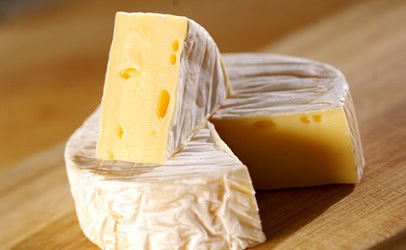
This question is equally as challenging as the previous one. Tying it back into how the process of pasteurization kills all bacteria, good and bad, a lot of friendly cultures essential for tasty cheese are destroyed and therefore they have to be reintroduced back into the milk after pasteurization. However, this still doesn’t help because the microflora is damaged and not passed onto the cheese no matter what. This poses a potential drawback in using pasteurized milk. That being said, it’s not justifiable to just say that unpasteurized milk is better, it is indeed a big factor for great cheese which has the potential to make better cheese. Then again, there are many amazing pasteurized milk kinds of cheese because of the skill of the cheesemaker.
In conclusion, cheeses which are made with unpasteurized milk are equally as safe to eat as those made with pasteurized milk and cheese which is made with unpasteurized milk has potential to taste better but that is just one of the factors that go towards the overall quality of cheese.
All About Organic Cheeses- Are They Better For You?
If you are a cheese lover, it is already hard enough to choose between your favorite Mozzarella, Stilton or Cheddar. Not only that but in recent years, creameries have created another delicious choice for us: Organic.

Image Source: gianteagle.com/93966253702.aspx
Organic cheese is very much like many other organic agricultural products on the market, organic cheese is produced without the use of antibiotics, growth hormones, or dangerous pesticides. The milk used to produce the organic cheese comes from all organic farms where cows only eat organically grown grasses. The cheese is also free from artificial coloring or flavorings, and a lot of the time, enzyme rennet, which is used to curdle the milk, is not made from animals or genetically engineered. In place of them are naturally occurring enzymes, making organic cheese not only delicious but safe for vegetarians too.
Why You Should Buy Organic
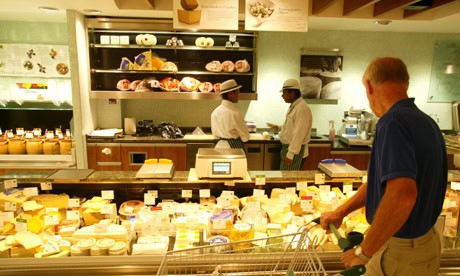
Image Source: pinterest.com/pin/548946642051275268/
It is always the case that when you buy food, it is important to find something that tastes good, and is generally good for you. The good thing about organic cheese is that they are often superior in taste and quality and have received many rewards from cheese connoisseurs and professional critics.
While organic cheese is great for your taste buds, the benefits of buying it stretch farther than just your body. Buying it positively affects everything from your personal health to farm animal welfare, to even the earth’s endangered environment. To put it all into perspective:
Organic Cheese Affects On Your Health
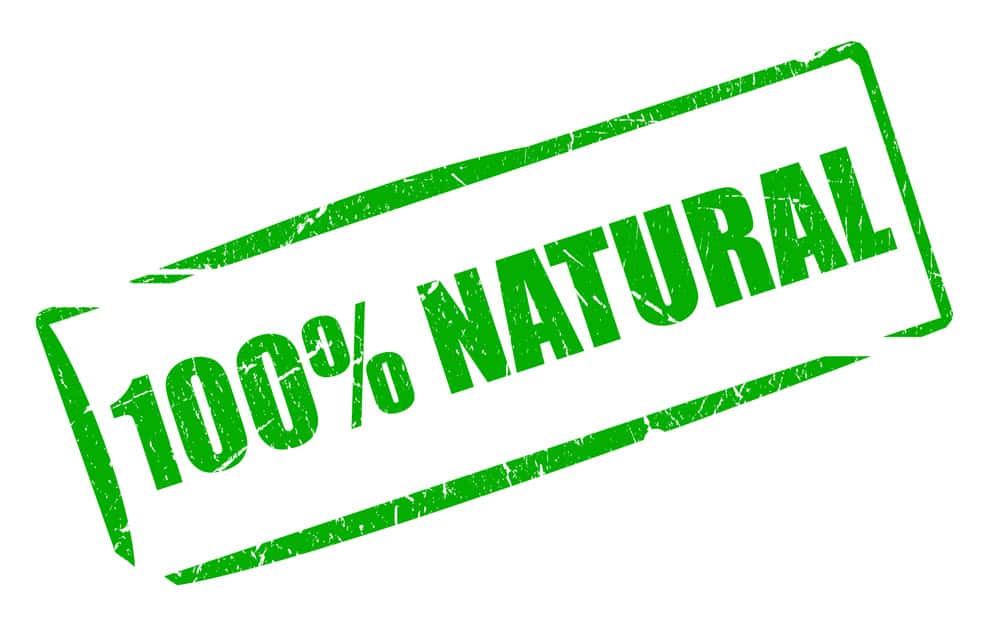
Organic cheese contains all the goodness from regular cheese, including the high levels of protein and calcium. However, research has proven that due to cows having a natural pasture-fed diet, cheese made from organic milk is much higher in nutritional value.
– Research has shown that there are more Antioxidants in organic cheese, with it being 2-3 times higher in antioxidants such as lutein. It is also proven that organic milk is up to 50% higher in vitamin E and 75% higher in beta-carotene. They all fight damaging free radicals and can perhaps aid the prevention of cancer and heart disease.
– Studies have shown that there are more Omega-3s, containing up to 71% more than non-organic milk. Omega-3s are vital for maintaining a healthy heart, strong bones and teeth and flexible joints.
– Organic cheeses also lower the exposure to the toxins and pesticides that often come from factory farming practices. This is very important for children in particular because their rapidly growing nervous systems are more sensitive to the effects of these harmful compounds.
The Welfare Of Animals

Image Source: renewingallthings.com
Another great thing about organic farming is that organic dairy farmers are also committed to the humane treatment of farm animals. Cows are not pumped with protein or antibiotics to force them into producing more than their natural capacities. They are kept in good health, fed an organic diet and have access to fresh air, natural light, and open pasture as much as possible.
Also, another important part of organic farming is that if the cows become sick, they are treated holistically with homeopathic medicines whereas, at non-organic farms, cows are routinely given antibiotics to prevent infection, even when they are healthy. While antibiotics are useful for fighting disease, they become less effective when used excessively. This has an onset effect for humans as we are being exposed to the antibiotics and they may lose effectiveness in treating humans too.
The Effects On The Environment

Image Source: therealwinerepublic.com/
You wouldn’t think that organic farming would have an effect on the environment, but it actually does. Organic farmers are not permitted to use chemicals that pollute the air, water or food. Instead, organic farmers use non-toxic pest control methods and sustainable farming techniques like crop rotation and composting. These methods ensure rich, healthy soils while conserving water and fossil fuels. They also are encouraging to wildlife, which has drastically declined over the last 50 years.
How To Know If It’s Organic

Image Source: ota.com/organic-101/organic-standards
Labeling is definitely important when cheese buyers are seeking higher nutritional value, toxin free and humane farming practices. In the U.S. it is the law to have certified organic labeling. There are numerous standards which are enforced by organic certification authorities. If you are in doubt, it is best to check your cheese packaging for organic accreditation. When cheese is labeled organic, it must contain at least 95% organically produced raw or processed agricultural products. Labels will usually contain the standard USDA certification.
The Probiotics In Raw Milk Cheese Are Proven Very Beneficial
Image Source: barfblog.com/tags/raw-milk-cheese/
Despite the controversy, raw milk cheese just may be the perfect food. It offers pretty much all the nutrition you need, with full distribution of amino acids, balanced calories and a huge amount of probiotics which are so good for your body.
The word ‘probiotics’ itself actually means “for life”, which means we cannot sustain our lives without these vital allies. They are an extremely beneficial bacteria that we all have and need for our bowels and intestinal tracts to function smoothly, and so much more. It is said that raw milk cheeses have a wider diversity of bacteria, yeasts, and molds, which ultimately contribute to a healthy gut.
Raw milk cheese is not only good for us but it tastes incredibly delicious, with its richness and complexity of flavors. The best cheese starts with high-quality milk. To achieve this, it must come from healthy cows that feed on lush grass. When it comes to raw milk cheeses, the milk is superlative because the animals have been grazing on pasture.
Even though pasteurization heat-treats milk, which kills pathogens such as Listeria and E. Coli, Laws still stipulate that raw milk cheese in the U.S. must be aged for a minimum of 60 days, regardless of if it is produced domestically or imported from abroad.
The Power Of Probiotics
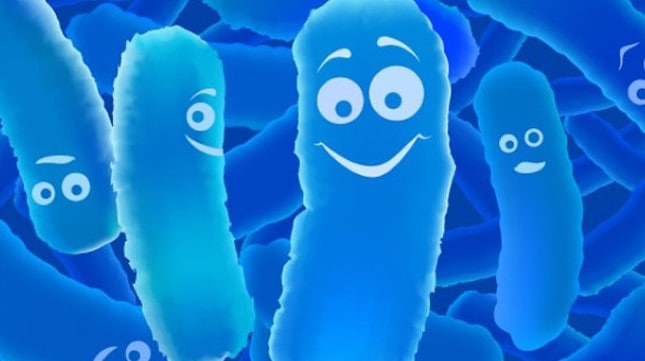
Image Source: chinesemedicinedoc.com/probiotics-strains-are-important/
Probiotics are proven to play an important role in maintaining healthy digestion and supporting a strong immune system. With the overuse of antibiotics, children often have compromised microbiomes and probiotics may be the key to restoring the healthy gut.
There are also studies that show that pregnant women who enjoy farmstead milk and cheese products throughout their term have children with fewer allergies, asthma and wheezing than those who do not enjoy these foods. Probiotics may also help decrease stress, prevent obesity and regulate weight. There are also studies that suggest that they also protect against respiratory infections.
So, with all these advantages to probiotics and raw milk cheese containing many, it is important to eat it, despite the controversy of raw milk cheese being bad for you. Raw milk cheese is also extremely delicious, so that alone is a plus.
The Best Low-Calorie Wine
Image Source: mohawkvalleywinery.com
Summer is closing in fast and we all want that ‘bikini body’… but we also love to drink wine. Usually losing weight involves completely ridding our lives of all alcoholic drinks. However, we all know that we can’t resist a delicious glass of wine after a long day or even just on a glorious sunny day. So, rather than trying to go cold turkey, why not try this perfect resolution of easing into summer with some low-calorie, weight-loss friendly wines?
Slim wine wines or skinny wines are definitely not the answer, you’d actually be surprised to know that there are plenty of ‘hidden’ low-calorie bottles that can be found on the shelf of your local wine shop. The two main things that contribute to wine being calorific are alcohol and sugar. With this, dry wines are the least calorific than those wines with residual sugar, and wines with lower alcohol content are also lower in calories which are why wine can be more diet-friendly than liquor-based drinks. The serving size may be larger, but wine is lower in alcohol than liquor, and most cocktails require mixers that add even more calories as well. An easy guideline would be to seek out bottles which are completely dry and contain and ABV of 12 percent or less. It doesn’t matter what type of mine, no option will be calorie free, the key is moderation.
For those sparkling wine lovers, you’ll be surprised to know that sparkling wine, in general, is the lowest calorie option for them all. Sparkling wine is usually lower in alcohol as they tend to be produced in cooler climates, and cooler climates generally mean lower-alcohol wines. Also, a lot of bottles have a sweetness level ‘key’ on the label. Lower dosage equals lower added sugar, so anything with the label of “brut nature,” “brut zero,” or “extra brut” is sure to be bone dry.
White wine lovers also don’t need to worry as white wine is the second lowest calorie wine available. They are definitely lower in alcohol than reds, and many of them fall under 12 percent ABV or less. Residual sugar, however, is something to watch for in white wines as many single-digit ABV bottles have a lot more residual sugar, which isn’t the greatest because sweet wines have around 30 more calories per serving than their dry counterparts.
The question you may be thinking right now is: does this mean that red wine drinkers need to drink something else altogether? Absolutely not. Although red wines tend to be fuller-bodied and have a higher ABV than white and sparkling wines, there are still healthy red wine options available. The best thing to do is look for bottles that are less than 13 percent ABV, the cooler climates offer the best options for this. The good thing about choosing red is that you don’t have to worry about sugar, as nearly all red wines are dry. Though, heavy red lovers may have to forgo their Merlots.. just while working on that summer body. A small sacrifice is much better than no wine at all though, that is for sure.
Calorie-Friendly Ideas
White Wines
Dry Riesling, Muscadet, and Picpoul.
Sparkling Wines
Cava, Champagne, and Crémant.
Red Wines
Schiava, Gamay, Barbera, and Pinot Noir.
10 Convincing Reasons Why You Should Eat More Chocolate
Chocolate is one of the world’s greatest comfort foods, it is the go to when life takes a bad turn, an easy gift for just about anyone, a satisfying, addicting treat that uplifts our moods.
Image Source: i.ndtvimg.com/i/2016-08/dark-chocolate-625_625x350_81470296507.jpg
Now too much of anything is never good for us, but there’s a whole list of the medically proven ways that chocolate, dark in particular is really good for us.
Even though research is ongoing, experts have already found a whole host of benefits such as chocolate being good for the brain, heart, and circulation. It has also been suggested that chocolate can be beneficial to major conditions such as obesity, diabetes, and autism.
With Easter just around the corner, and all that chocolate awaiting us, let’s explore 10 convincing reasons as to why you should eat MORE chocolate!
1. Chocolate is Really Good for Your Skin
Image Source: ezyshine.com/wp-content/uploads/2013/12/Bannatyne-Chocolate-Spa-Days1.jpg
Your skin can be protected from sun damage because of the flavonols in dark chocolate. (That doesn’t mean you shouldn’t apply sun cream when needed).
2. It is Good for Mothers and Their Babies
Image Source: images.parents.mdpcdn.com/sites/parents.com/files/styles/width_360/public/images/550_101529473.jpg
A study in Finland says that the stress of expectant can be reduced through consuming chocolate which is subsequently a lot better for a pregnancy. The study also found that babies of mothers who consumed chocolate during pregnancy smiled a lot more than babies who were from non-chocolate-eating parents.
3. Reduces The Risk of Strokes
Image Source: alert-1.com/data/uploads/media/image/3%20PP_iStock_000002277578XSmall.jpg
Studies in Finland, in particular, have found through testing that the consumption of chocolate lowers the risk of suffering from a stroke. The researchers found that a staggering 17 per cent average of men in the group they tested had a lower risk after consuming chocolate during the study.
4. Cholesterol is Reduced
Image Source: vitaminretailer.com/wp-content/uploads/2014/09/heart-health.jpg
High consumptions of cocoa have been found to reduce the levels of ‘bad’ cholesterol and actually raise the levels of ‘good’ cholesterol. This ultimately can potentially reduce the risk of health issues such as cardiovascular disease.
5. Chocolate is Good for The Brain
Image Source: brighterbrains.org/images/uploads/thumbs/braichocon.jpg
The flavanols in dark chocolate are thought to reduce memory loss in elderly people. Dark chocolate has also been found to be beneficial in treating brain injuries like concussions, because of the anti-inflammatory qualities it contains.
6. Chocolate is Rich in Minerals
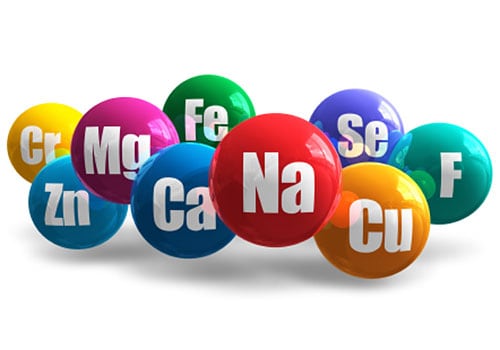
Image Source: bbcgoodfood.com/sites/default/files/minerals-main.jpg
Dark Chocolate is full of minerals which are extremely beneficial to us. Minerals such as zinc, selenium, and potassium are in bars of dark chocolate which have a percent of cocoa over 70. The 100g bars of dark chocolate also provide 67 percent of the RDA of Iron.
7. Chocolate Makes You Feel Better
Image Source: cdn.mamamia.com.au/wp/wp-content/uploads/2016/03/29182707/dark-chocolate.jpg
Everyone can relate to chocolate making them feel better. This is actually because chocolate contains phenylethylamine (PEA), which is a chemical that encourages your brain to release feel-good endorphins, quite like when you’re falling in love.
8. Heart and Circulation
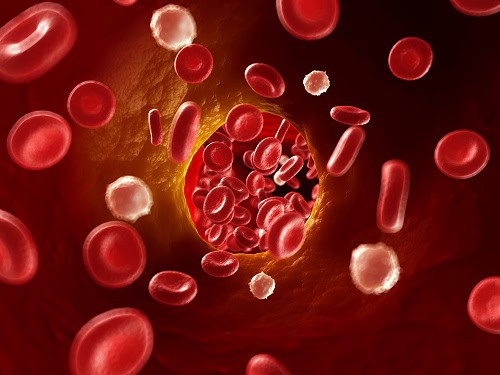
Image Source: steptohealth.com/wp-content/uploads/2014/07/Circulation.jpg
A study has found that dark chocolate can actually help to restore the flexibility of arteries, while white blood cells are also being prevented from sticking to the walls of blood vessels- both in which are common causes of artery clogging.
9. Chocolate Can Help You Lose Weight!- (What?!)
Image Source: adhyatam.com/wp-content/uploads/2016/09/choclate.jpg
It is true! Chocolate can actually help you lose weight! A neuroscientist Will Clower says that if you consume a small square of chocolate melted on the tongue 20 minutes before a meal triggers the hormones in the brain that tell you you’re ‘full’, which ultimately cuts down the food you consume during the meal. If you finish the meal eating a small chocolate can subsequently trigger snacking, so beware!
10. Chocolate May Be Able To Prevent Diabetes
Image Source: az616578.vo.msecnd.net/files/responsive/embedded/any/desktop/2016/07/18/636044518939608069-267320269_Diabetes-Control.jpg
It may sound a little backward, but cocoa has actually been shown to improve insulin sensitivity. So in turn, dark chocolate which is high in cocoa, if eaten in moderation, may be able to delay or prevent the onset of diabetes.
Should You Eat Moldy Cheese?
It’s always a shame when we discover our food has gone to waste because of mold. While mold is usually a sign that it’s time to discard something, it’s not as clear exactly what to do when it comes to cheese. Here is a guide which will help you differentiate which cheese is ‘good’ and which is ‘bad’ when mold takes place.
Image Source: static1.businessinsider.com/image/54cffb496bb3f7225d1b7747/we-definitively-solved-the-debate-over-whether-you-can-still-eat-cheese-with-mold-on-it.jpg
Now there are very clear types of cheeses that must be discarded when mold occurs- soft cheese like cream cheese, cottage cheese, and ricotta cheese. Also, cheese that is shredded, sliced or crumbled should be discarded when mold appears. With these kinds of cheeses, the mold can send threads all throughout the cheese. Harmful bacteria such as salmonella, e.coli, listeria, and brucella can also grow throughout the cheese. So stay clear of any consumption if these cheeses have mold.
Image Source: newhealthadvisor.com/images/1HT00226/PART1.png
There is still hope for cheese with mold, though. Mold usually can’t penetrate far into hard and semisoft cheeses, like cheddar, parmesan, swiss and Colby. So it is easy to just cut the mold away from the cheese and eat the rest. It is safe practice to cut at least an inch around and below the mold to be safe, and do not contaminate the rest of the cheese by touching it with the knife.

Image Source: triggerwarning.co.uk/wp-content/uploads/2016/02/Cheese-board.jpg
It is true that not all molds pose a risk. Some types of mold are actually used to make cheeses, such as Camembert and Brie. These are safe molds to eat.
Whether or not you should eat the mold generally relies upon what type of cheese it is. It’s usually quite easy to differentiate between, but if you find yourself unsure, it is best to discard the cheese, just to be safe.
Barley Bread Is Not Only Tasty But…
A study in Sweden found that not only is barley bread healthy for us, but it can actually cut the risk of diabetes and obesity.

Image Source: healthadel.com/wp-content/uploads/2010/07/diabetes.jpg
The study involved middle-aged participants being asked to eat bread made from 85% barley for breakfast, lunch, and dinner. Around 11-14 hours after the last meal of that day, they were then examined for diabetes and cardiovascular disease risk indicators.
It found that a special mix of dietary fibers improved the person’s metabolism for up to 14 hours. Not only that, but it also decreased the blood sugar and insulin levels, making insulin sensitivity increased, it also increased appetite control. The bread was also found to help regulate the growth of healthy gut bacteria.
So now we know all the benefits to this delicious bread, spice up your meal times with this Barley Bread Recipe, while also keeping it healthy:
Image Source: eataly.com/wp/wp-content/uploads/2015/08/20130422_eataly_FSP9551_1500_q70.jpg
What You Need:
– 10 ounces barley flour
– 1 teaspoon kosher salt
– 1-ounce baking powder
– 2 tablespoons honey
– 1/4 cup canola oil, plus extra for greasing the pan
– 2 eggs
– 1 cup whole milk
What To Do:
Image Source: 4.bp.blogspot.com/-ZzSTxFU5Hpk/VH9to0_ku6I/AAAAAAAANAk/1r5x2_JFulQ/s1600/BarleyBread010.jpg
First, preheat the gas grill on low heat for at least 10 minutes
Then, lightly grease the sides and bottom of a 4 to 5-quart dutch oven with canola oil.
In a mixing bowl, mix together the flour, salt, and baking powder. Then in another mixing bowl, whisk together the honey, oil, eggs and milk. Add the wet and dry mixed ingredients together.
Pour the batter into the dutch oven, not covering with a lid. Then place the dutch oven on the grill and close the lid of the grill.
Cook with the lid closed for 35-40 minutes, or until the internal temperature reaches 190 degrees F.
Allow to cool off in the dutch oven for at least 5 minutes before putting on a cooling rack.
If you are baking in a traditional oven, bake at 350 degrees F for 25-30 minutes or until it reaches 190 degrees F.
And enjoy!

Image Source: bakeryandsnacks.com






